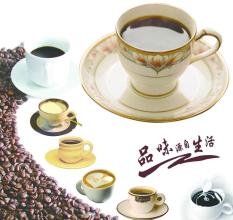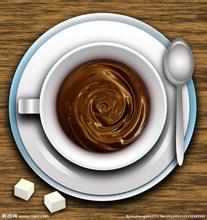Introduction to the flavor and taste of Rwanda boutique coffee Malaba coffee
After the washed coffee beans are air-dried on the net rack, after washing the coffee beans many times to completely remove the remaining skin and sugary outer layer, the coffee beans are put into the sheltered rack to air-dry. Cooperative staff regularly flip coffee beans, while technicians continue to look for and pick out poor quality coffee beans. The two-week drying process takes place in the sun (prepare the mulch in case of rain) and keep turning the coffee beans. This step reduces the water content of coffee beans from 40% to 12%.
Then the mechanic transported the coffee beans to the technology center near Chez. Some machines installed in warehouses on the hills remove the cutin from coffee beans. The staff sent the coffee beans to nearby research institutes for final quality control-manual sorting, which was carried out by several experienced women. After bagging and labeling according to its quality, the coffee beans can be stored in the warehouse waiting for the market.
In 2000, the Mayor of Malaba requested development assistance from the National University of Rwanda (UNR), which is located near the city of Butare, and the following year, the National University of Rwanda assisted in the establishment of the Joint strengthening Rwanda Agricultural Partnership (PEARL). The PEARL project is also supported by several organizations: the United States Agency for International Development (USAID), Michigan State University, Texas A & M University, and many other Rwandan organizations, including the National University of Rwanda, the National Agricultural Laboratory (ISAR) and the Gejali Institute of Technology Management (KIST). In February 2001, PEARL began working with Abauzam Gamby to improve the quality of coffee to meet the standards of the US professional coffee market, and then sold the coffee to the US-UK charity comic relief also became interested in Malaba. They pledged to use some of the 55 million pounds earned from their 2001 Red nose Day (Red Nose Day) in Britain and Africa to donate to the Genocide Widows Association (Association des Veuves du Genocide,AVEGA), an association set up for the widows of the 1994 Rwanda massacre. The charity found that many Malaba farmers are also members of AVEGA, so they can provide funds and assistance to Malaba farmers through AVEGA. They then contacted the British coffee roasting company (Union Coffee Roasters) and their representatives visited Malaba together with senior officials of the International Fair Trade labelling Organization (FLO) in 2002. After a group of people visited various places, they awarded proof that Malaba coffee had also become a commodity for the first time for Rwandan cooperatives to gain fair trade status. UCR described Malaba coffee as "flickering citrus flavors with rich, sweet chocolate notes" and bought all the unsold coffee fruits during the 2002 harvest. The peak harvest season for Rwandan coffee is during the main rainy season, from March to the end of May. During the harvest season, farmers spend most of their day picking coffee fruits by hand. In the afternoon, farmers carry coffee fruits in traditional baskets made of banana leaves to a cleaning station a few hours away. The mechanic picks out the best quality crimson coffee fruit by hand and returns the remaining coffee fruit to the farmers and sells it at a low price in the market outside the Malabaga work area. The mechanic pays the farmer $0.10 per kilogram. The guild deposits the remuneration into the farmer's bank account every two weeks.

Important Notice :
前街咖啡 FrontStreet Coffee has moved to new addredd:
FrontStreet Coffee Address: 315,Donghua East Road,GuangZhou
Tel:020 38364473
- Prev

High quality and delicious Colombian Coffee Flavor taste introduction to the characteristics of Fine Coffee in Manor area
Washington, D.C. (English: Washington,D.C.) is the capital of the United States and a federal district. The two parts of the English name reflect its dual identity, Washington (Washington, D.C.) is the name of the capital, while D.C. It stands for District of Columbia (District of Columbia) and is an area under direct federal jurisdiction. Washington, D. C.
- Next

Characteristics of Rosa Coffee Flavor
Summer coffee raw beans have a very beautiful blue-green, jade-like warm texture, smell of fresh grass, peach, berry and oolong tea that most coffee beans do not have. It seems that aroma and taste of this kind of thing is very necessary to cooperate with association, but the faint smell of tea is obvious to us. In order to highlight the characteristics and aroma of this bean
Related
- Detailed explanation of Jadeite planting Land in Panamanian Jadeite Manor introduction to the grading system of Jadeite competitive bidding, Red bid, Green bid and Rose Summer
- Story of Coffee planting in Brenka region of Costa Rica Stonehenge Manor anaerobic heavy honey treatment of flavor mouth
- What's on the barrel of Blue Mountain Coffee beans?
- Can American coffee also pull flowers? How to use hot American style to pull out a good-looking pattern?
- Can you make a cold extract with coffee beans? What is the right proportion for cold-extracted coffee formula?
- Indonesian PWN Gold Mandrine Coffee Origin Features Flavor How to Chong? Mandolin coffee is American.
- A brief introduction to the flavor characteristics of Brazilian yellow bourbon coffee beans
- What is the effect of different water quality on the flavor of cold-extracted coffee? What kind of water is best for brewing coffee?
- Why do you think of Rose Summer whenever you mention Panamanian coffee?
- Introduction to the characteristics of authentic blue mountain coffee bean producing areas? What is the CIB Coffee Authority in Jamaica?

